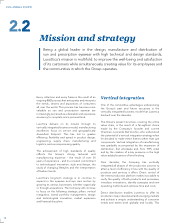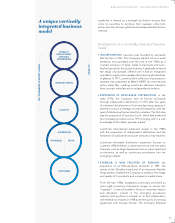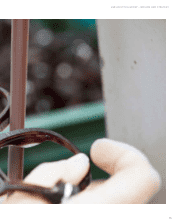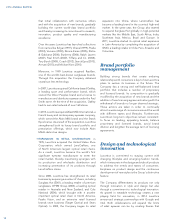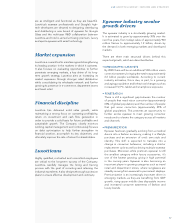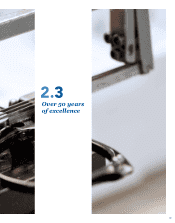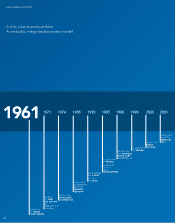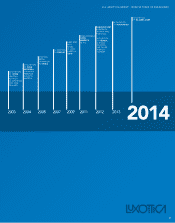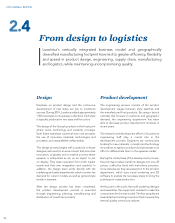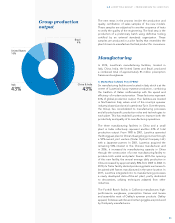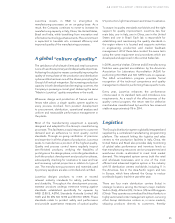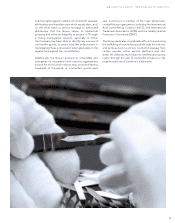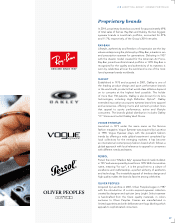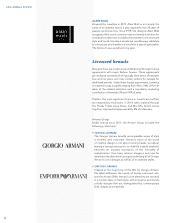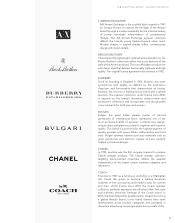LensCrafters 2014 Annual Report Download - page 24
Download and view the complete annual report
Please find page 24 of the 2014 LensCrafters annual report below. You can navigate through the pages in the report by either clicking on the pages listed below, or by using the keyword search tool below to find specific information within the annual report.
2.4
Luxottica’s vertically integrated business model and geographically
diversified manufacturing footprint have led to greater efficiency, flexibility
and speed in product design, engineering, supply chain, manufacturing
and logistics, while maintaining uncompromising quality.
Design
Emphasis on product design and the continuous
development of new styles are key to Luxottica’s
success. During 2014, Luxottica added approximately
1,900 new styles to its eyewear collections. Each style
is typically produced in two sizes and five colors.
The design of the Group’s products is the focal point
where vision, technology and creativity converge.
Each frame expresses Luxottica’s two core precepts:
the use of innovative materials, technologies and
processes, and unparalleled craftsmanship.
The design process begins with Luxottica’s in-house
designers who work in an environment that promotes
innovation, originality and a creative process where
eyewear is interpreted as art, as an object to put
on display. They draw inspiration from both market
trends and their own imagination and creativity. In
addition, the design team works directly with the
marketing and sales departments, which monitor the
demand for current models, as well as general style
trends in eyewear.
After the design process has been completed,
the product development process is executed
through engineering, planning, manufacturing and
distribution of Luxottica’s products.
Product development
The engineering process consists of the product
development stages between style sketches and
the manufactured final products. By using a launch
calendar that focuses on customer and geographic
demand, the engineering department has been
able to decrease product development timelines in
recent years.
The research and development efforts of Luxottica’s
engineering staff play a crucial role in the
development process. Engineers are continuously
looking for new materials, concepts and technology
innovations to apply to products and processes in an
effort to differentiate them in the eyewear market.
During the initial phase of the development process,
the prototype makers transform designs into one-off
pieces, crafted by hand with meticulous precision.
Once developed, they are passed on to the product
department, which uses visual rendering and 3D
software to analyze the necessary steps to bring the
prototype to mass production.
At this point in the cycle, the mold workshop designs
and assembles the equipment needed to make the
components for the new model. The first samples are
assembled and undergo a series of tests required by
internal quality control procedures.
From design to logistics
2014 ANNUAL REVIEW
22


